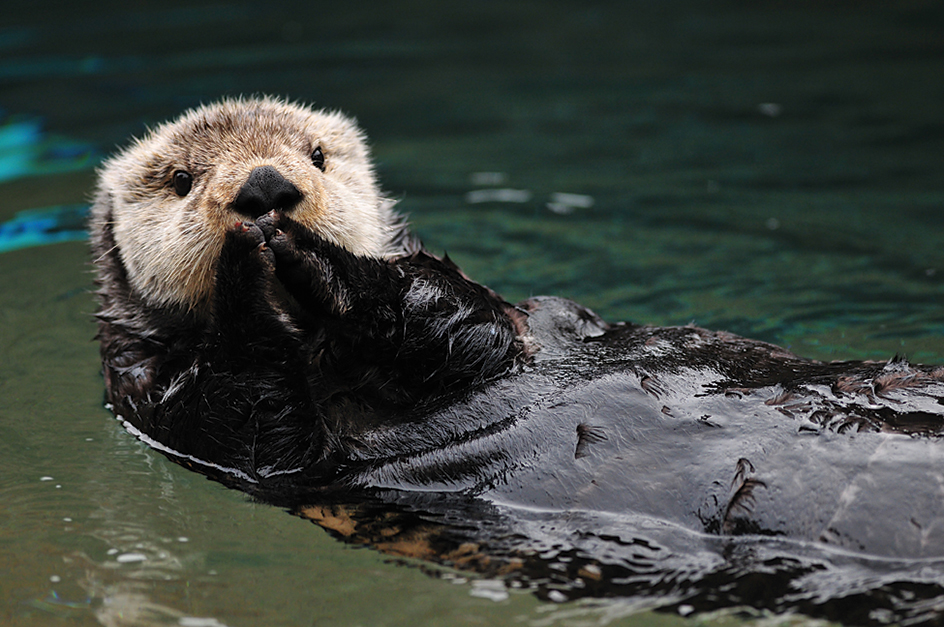Sea otter is a furry animal that lives in the North Pacific Ocean. Herds of sea otters dwell near the shores of western North America and Siberia. They seldom leave the water.

The sea otter swims using its flipper-shaped hind feet as paddles. It eats and sleeps while floating on its back. Sea otters often sleep in masses of floating seaweed called kelp. The female carries her baby on her chest as she paddles about on her back. She has one baby, called a pup, at a time.
Most sea otters grow from 4 to 5 feet (1.2 to 1.5 meters) long and weigh from 60 to 85 pounds (27 to 39 kilograms). A large male, however, may weigh up to 100 pounds (45 kilograms). Sea otters have thick brown fur that traps air and keeps their skin dry. The fur also insulates them against the cold. Unlike seals and sea lions, sea otters do not have a layer of blubber under their skin. A sea otter dives as deep as 180 feet (55 meters) for food and can stay underwater as long as four minutes. It uses its front paws for grasping and holding, as do some otters that live in fresh water. For information about freshwater otters, see the article on Otter .
Sea otters may eat as much as a fifth of their body weight every day. They feed on abalones, clams, crabs, fish, mussels, octopuses, sea urchins, and squids. Sea otters pry open shellfish in various ways. They use their teeth or their paws, and may pound one clam or mussel against another. A sea otter also may balance a rock on its belly and hammer the shellfish against it.
For centuries, sea otters have been hunted for their valuable fur. From the mid-1700’s through the 1800’s, fur traders killed so many sea otters that the animal almost disappeared. In 1911, Canada, Japan, Russia, and the United States signed a treaty that prohibited the hunting of sea otters. As a result, the world’s sea otter population increased steadily. In 1989, an accident involving the U.S. tanker Exxon Valdez spilled nearly 11 million gallons (42 million liters) of oil into Prince William Sound off the coast of Alaska. About 2,800 sea otters are believed to have died due to the oil spill.
